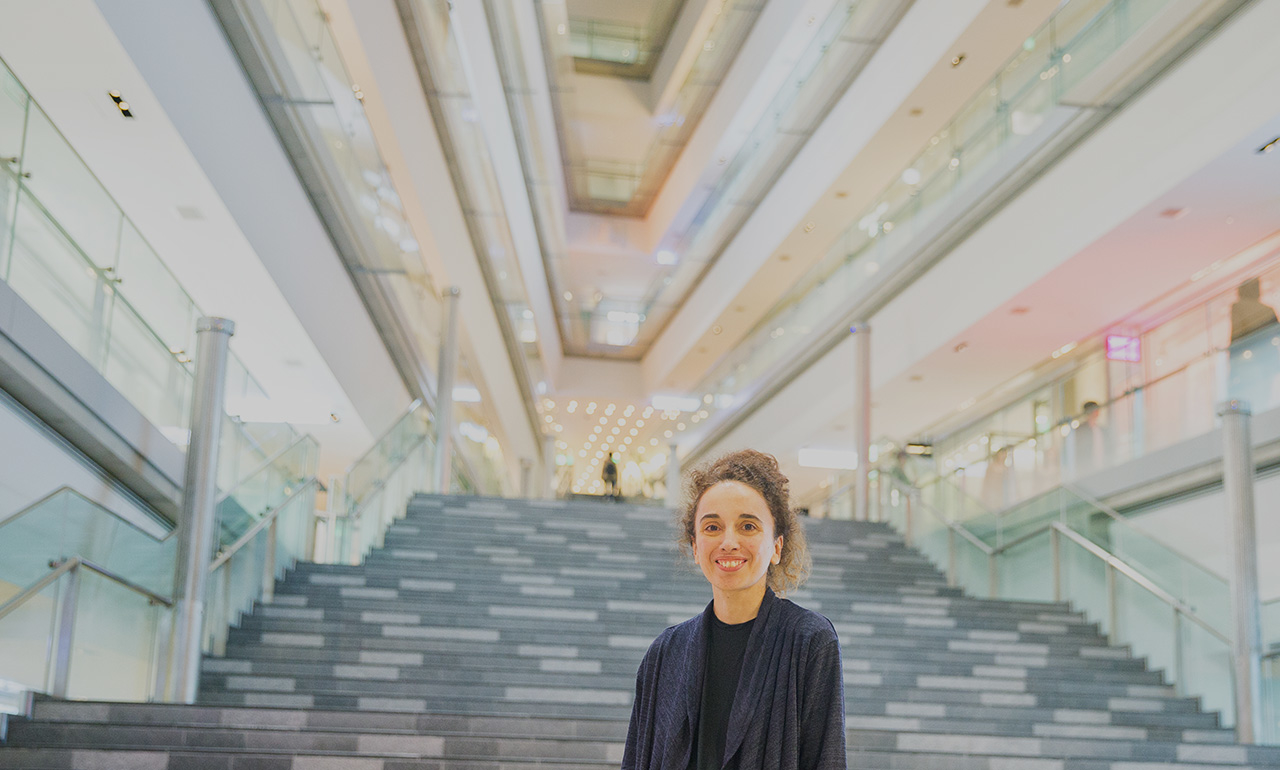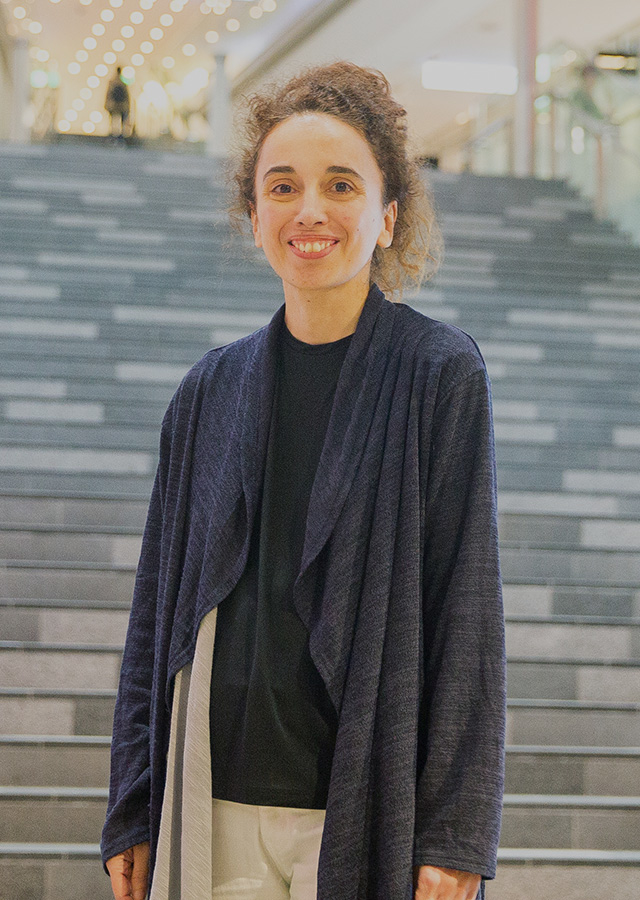“Christmas Forest in 100 Colors,” a Christmas illumination installation designed by French architect and designer Emmanuelle Moureaux, will be on display from Wednesday, November 8 to Monday, December 25 at the large atrium stairway in Omotesando Hills.
Moureaux produces artwork based on the theme of “100 colors,” drawn from her experience of being inspired by the colors of the city of Tokyo during her first visit. Her vivid Christmas tree forest that can be seen at the large atrium stairway of Omotesando Hills employs the concept of “shikiri” (dividing space using colors), her own concept that stems from traditional Japanese methods of dividing space through partitions (shikiri).
This fantastical installation that can be enjoyed in 360° is one that has never been seen, making use of around 1,500 miniature paper trees in 100 different colors, giving off a soft glowing light. We talked with Moureaux about the things she gave particular attention to in making this work of Christmas illumination.
---- We understand that this is your first work creating Christmas illumination. The name of your work is “Christmas Forest in 100 Colors,” which is in the large atrium stairway in Omotesando Hills—a place that is characteristic of Omotesando Hills itself. You’ve featured 1,500 colorful miniature trees there, but how did you go about creating the theme?
Emmanuelle: I first imagined Omotesando, which is an urban area with lots of natural greenery. For the theme, based on the image of lines of urban greenery and comparing the large atrium stairway of Omotesando Hills to a great hollow space, I started out with the thought of creating a large forest in that space. One of the characteristics of Omotesando Hills is the sloped walkway that goes from floor to floor. I decided to use this to create a panoramic Christmas illumination that can be enjoyed from any angle. There are 1,500 mini-Christmas trees with 100 colors. They are stacked into layers, so the color gradation looks different depending on where you’re standing, and it will look different depending on your horizontal and vertical position. This all began when I got the idea to create illumination that maximizes the characteristics of the Omotesando Hills building, which naturally invites people to come in and look around.
---- In solidifying your ideas, the words you just spoke were more important than the image you had, is that right?
Emmanuelle: That's right. In any project I do, words are very important. Of course, I make sketches; but before that, I think of different words to solidify the idea. So, the idea starts in my head, and then I create sketches to augment my words when I share this with my office staff or other people. For this installation, like I said before, the work was derived from the keywords of enjoying the work from a variety of angles.
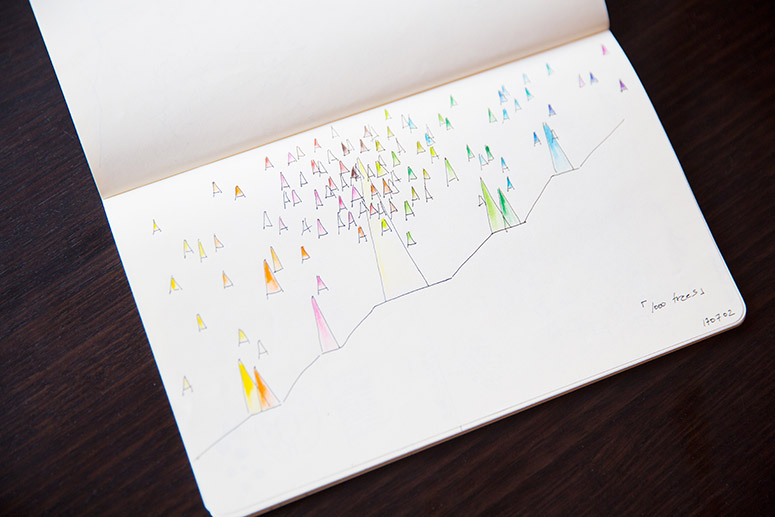
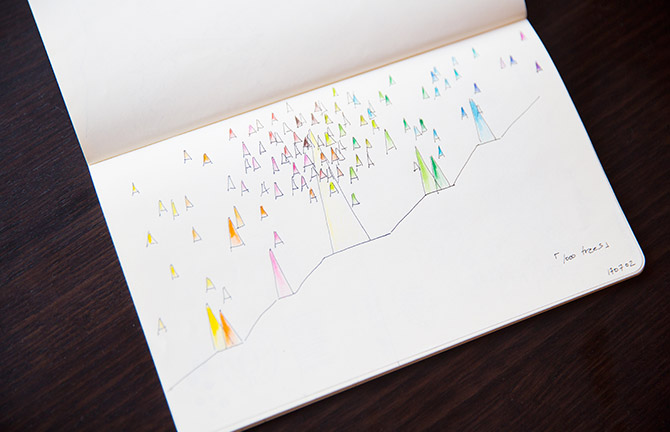
---- In general, when we hear the word “illumination,” we think of a scene with LED lights. This time, however, we hear that you are lighting up 1,500 mini-trees using 100 colors of paper. Tell us about what gave you the idea to light up your own 100-color work of art.
Emmanuelle: When I heard the words “Christmas illumination,” I was actually a bit worried. Generally, when you think of “Christmas illumination,” you imagine colored light bulbs... but personally, I wanted to avoid using LED light bulbs, and create a beautiful scene by maximizing the use of the colors themselves. After that thought, I ran out of ideas for a while; but eventually, I came up with the simple idea of using the 100 colors I had taken the time to create. So, what you see is not 100 light bulbs, but an installation that lights up the 100 colors themselves. By enveloping the light in color, much like a Japanese paper lantern, I’ve created a space that gives off a soft light, making a Christmas illumination that feels more gentle than any other such exhibit.
---- Tell us what you paid special attention to, in order to make the 1,500 mini-trees light up.
Emmanuelle: We made many experiments at the office to try out different sizes, lighting and mini-tree shapes; and through trial and error on location, we found the best way to produce lovely-looking colors. The installation looks different when you actually see it in person; and since we couldn’t test every combination for around 1,500 mini-trees and 100 different colors, we made a lot of adjustments to the work. The most important point was how my 100 colors on paper would look when lit up with white light. We had lots of light bulbs strewn about our office, in order to try out different amounts of light and to see whether we wanted white light or yellowish light for the colors. Thanks to all this, I feel that we finally we able to create a scene by making the colors themselves glow in a pretty way.
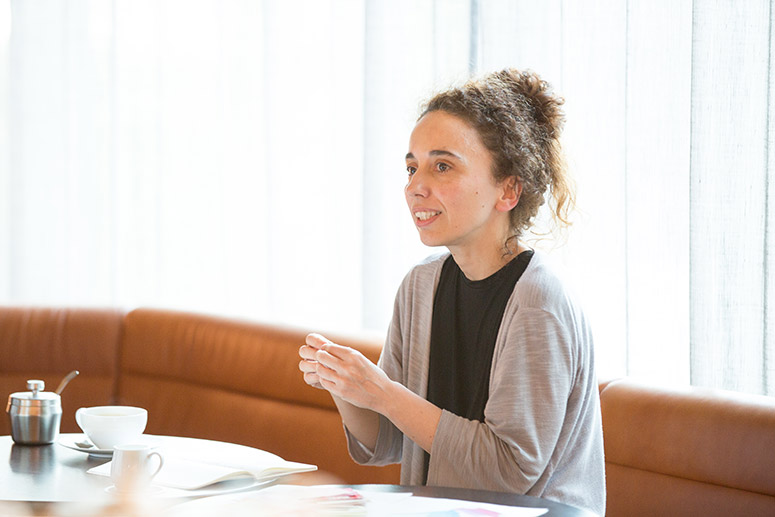
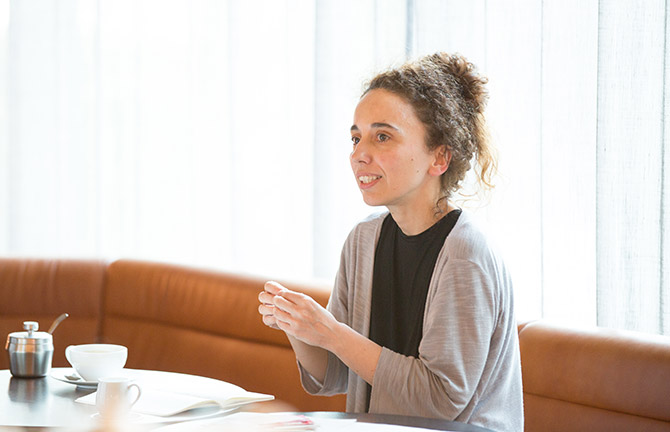
---- The main tree gives off a white light, which is different from the mini-trees that spread out over the upper part of the complex. Can you explain why you used white light?
Emmanuelle: Previously, I used 100 colors for various works, and found that the color of light that made the colors look the prettiest was white. This time as well, since we have 100 colors of mini-trees hanging around the entire atrium, we used a more subdued white in the center, so that the main tree and the mini-trees would accentuate each other. As with the process I just explained, we make the main tree glow using light bulbs that shine on seven-meter wide white paper covered with acrylic. For a special display, we light up the tree from yellow to pink, green, blue and finally rainbow colors, in time with special music. The effect this should give is like an endless number of colors shining from the main tree and then scattering out to the mini-trees. Normally, the main and mini-trees will complement each other; but for special productions, we will display it so that their colors will work together in consonance.
---- Are you overseeing the production as well?
Emmanuelle: Yes, I’m overseeing how the light, color and music work together. This was interesting for me, since it was my first time to oversee a production. It was a fresh experience for me to work together in cooperation with composers, lighting staff and people of different genres to make the entire scene take shape. I’ve really been looking forward to seeing it come together. I hope that this will give visitors a chance to experience Christmas illumination as they never have before.
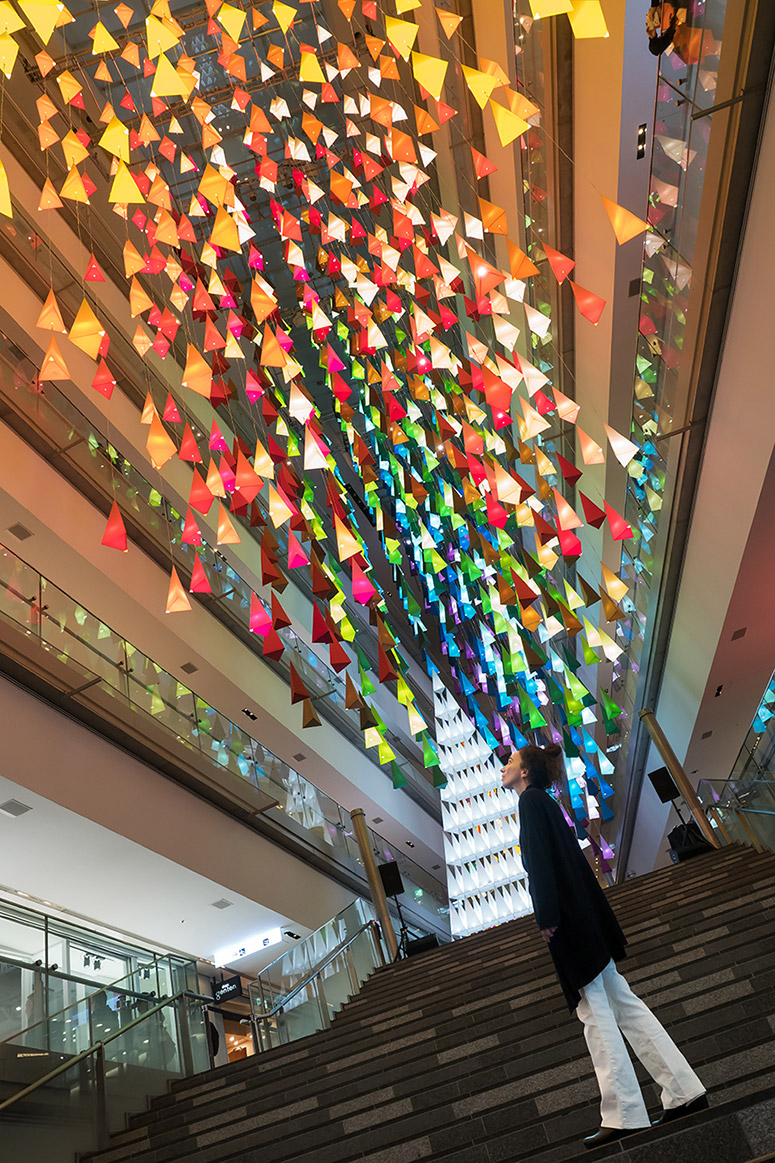
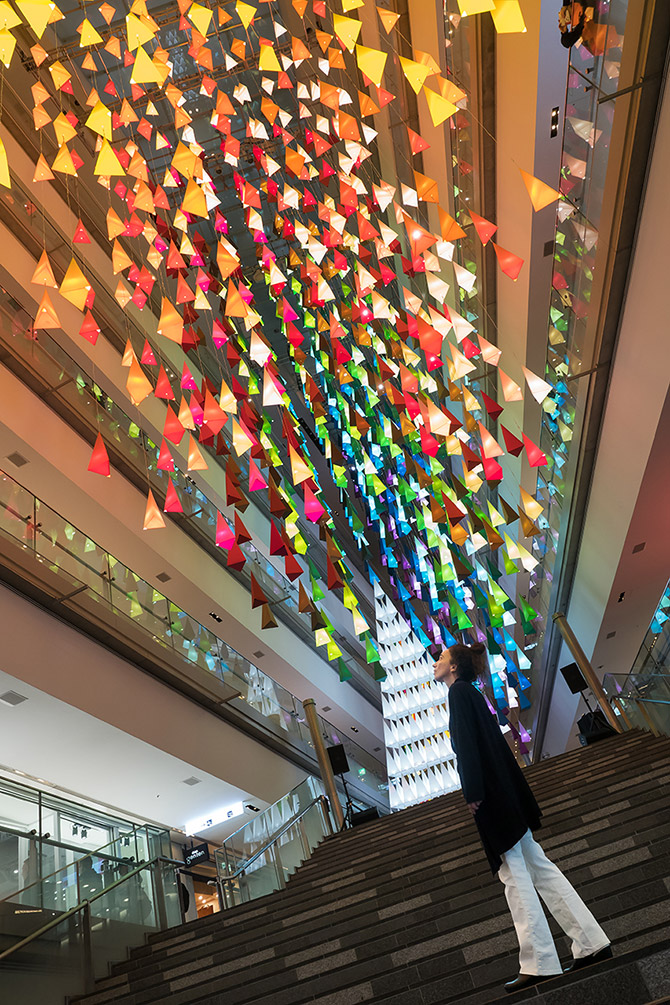
Profile
Emmanuelle Moureaux
(architect/designer)
フランス生まれ。1996年より東京在住。 emmanuelle moureaux architecture + design主宰。東京の"色"と街並が成す複雑な"レイヤー"と、日本の伝統的な"仕切り"から着想を得て、色で空間を仕切る「色切/shikiri」コンセプトを編み出す。色を通して1人でも多くの人にエモーションを感じてもらいたいという想いを胸に、建築、空間、デザイン、アートなど多様な作品を創造し続けている。東北芸術工科大学准教授。受賞歴として、「International Architecture Awards」、「ARCHITIZER A+AWARDS」、「ICONIC AWARDS」、「Aesthetica Art Prize」等、国内外の様々な賞を受賞。URL:http://www.emmanuelle.jp/
Photo by Yutaro Tagawa
Text by Yoshiko Kurata
For more information about Christmas illumination, click here
FEATURE
VIEW ALL-
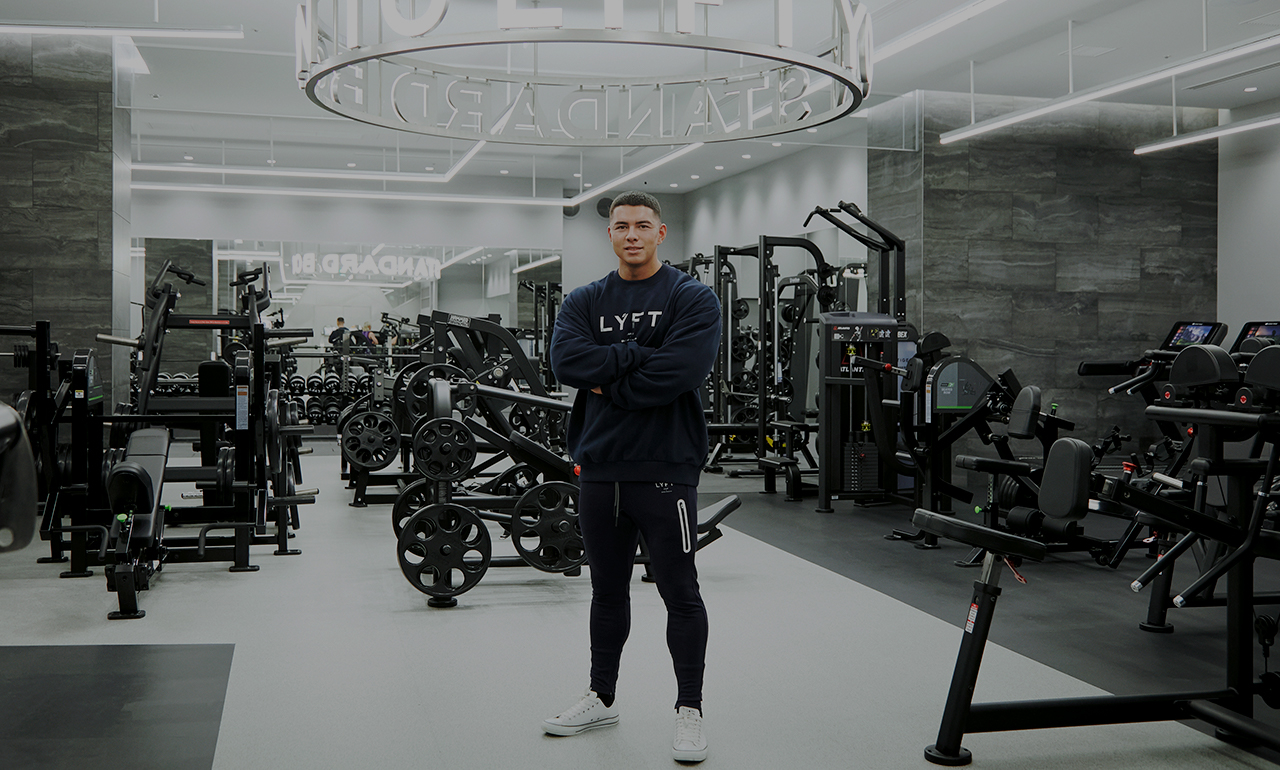 2023.11.09
2023.11.09「LÝFT GÝM」エドワード加藤「"表参道ヒルズのジム"ならではの付加価値」
-
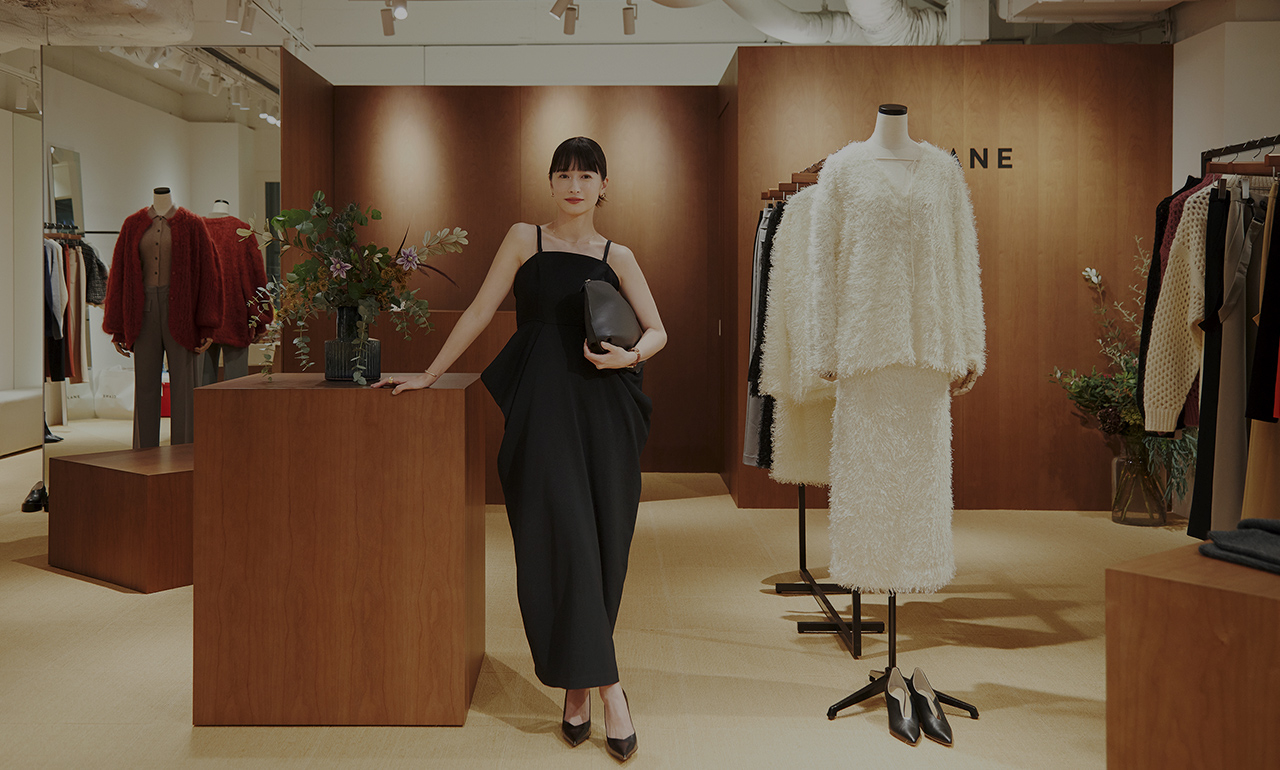 2023.10.31
2023.10.31"CLANE" 8th anniversary. Ena Matsumoto talks about “things that change, things that don’t change”
EVENT&TOPIC
VIEW ALL-
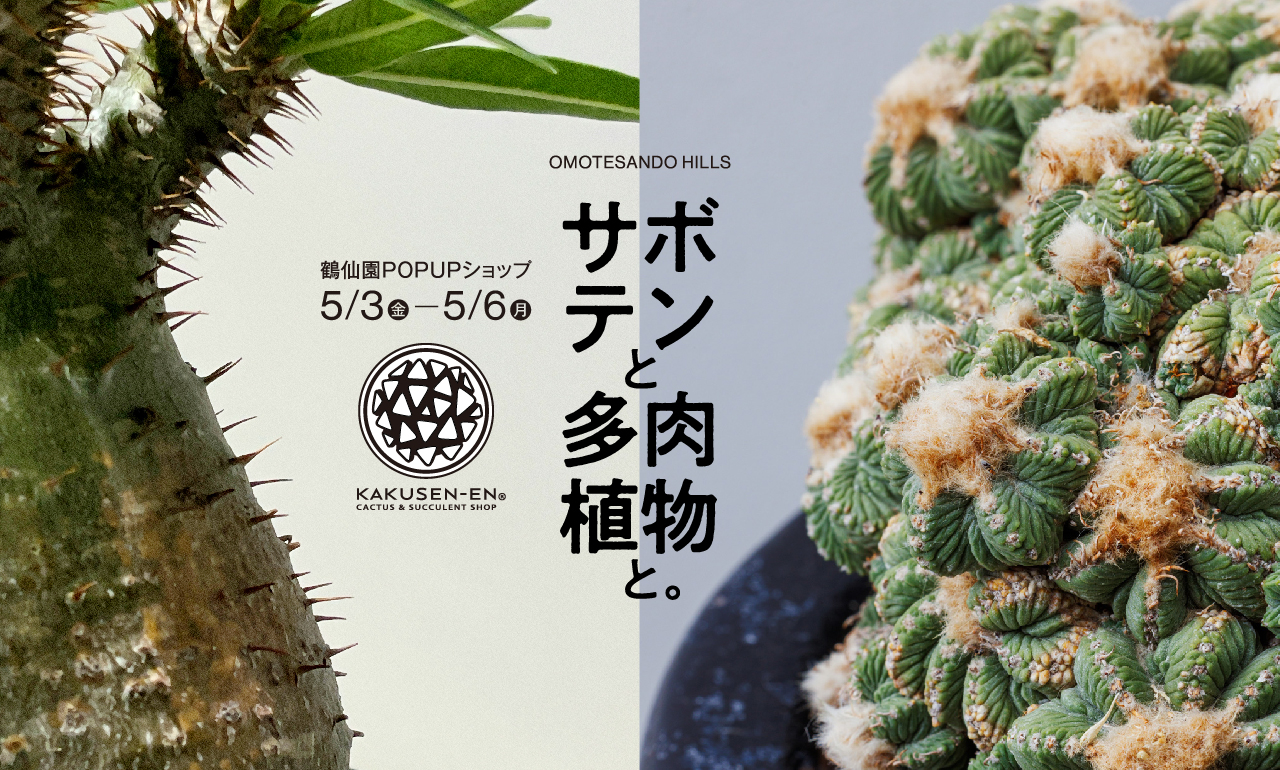 2024.04.17
2024.04.17サボテンと多⾁植物と。
― 浪漫溢れる不思議と神秘に迫る世界へようこそ ― 表参道ヒルズがゴールデンウィークにアレオーレとビザールな世界でマニアを唸らせる、サボテンと多肉植物の専門ショップ「KAKUSEN-EN(鶴仙園)」とコラボレーション!POPUPショップと吹抜け大階段の空間装飾を行います。 葉や茎に⽔分をたっぷり含んだ姿が可愛らしい多⾁植物。その種類は豊富で、サボテンをはじめ、根や幹の部分が⼤きく膨れ上がったコーデックス(塊根植物)など突き詰めると果てがない奥深さがあります。近年魅了され続けてやまないマニアックな愛好家だけでなく、植物から癒される、⼈と⾃然の新しい関係性との出会いを是非この機会にご堪能ください。 ※KAKUSEN-EN(鶴仙園)POP UP ショップは 5月3日(金・祝)~5月6日(⽉・祝)開催。吹抜け大階段の空間装飾は5月12日(⽇)まで実施します。 <KAKUSEN-EN(鶴仙園)> 今や日本でサボテンを育てているならば、知らない人はいないであろう多肉植物専門店。北⽶、中⽶、南⽶そしてアフリカ⼤陸原産のサボテンはじめとした多⾁植物を取り扱い、一般層からコア層まで、幅広く満足させるサボテン・多肉植物の専門店として、一線を画す存在となっている。
-
 2024.04.09
2024.04.09KIDS&FAMILY Mail News
4月24日(水)から新たに「HILLS APP/HILLS CARD KIDS & FAMILY Mail News」がスタートします。ご希望の方はぜひご登録下さい。
-
 2024.04.08
2024.04.08HILLS ポイントキャンペーン
ヒルズポイントが5倍、ヒルズカードMastercardⓇでお支払いいただくとクレジットポイントが10%にUP!
